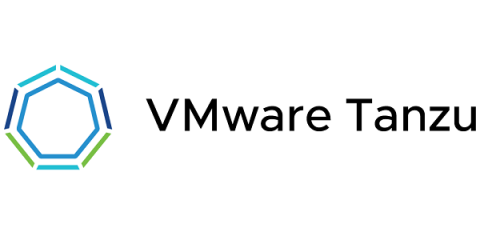Operations | Monitoring | ITSM | DevOps | Cloud
June 2021
How to Build a Kafka-Spark-Solr Data Analytics Platform Using Deployment Blueprints
Enterprise applications rely on large amounts of data that needs to be distributed, processed, and stored. Data platforms offer data management services via a combination of open source and commercially supported software stacks. These services enable accelerated development and deployment of data-hungry business applications. Building a containerized data analytics platform comprising different software stacks comes with several deployment challenges.
Build a Data Analytics Platform in Minutes Using Deployment Blueprints
In order to stay competitive, enterprise organizations are engaged in an ongoing drive to optimize and scale the delivery of their products and services. Data has become a critical solution component of achieving these goals.
Tracing the Path to Clear Visibility in DevOps
Today, we’re excited to announce enhancements to the VMware Tanzu Observability by Wavefront platform, which helps teams scale their observability practices and shorten the feedback loops between development and operations. The new features give more flexibility and functionality to any open source investments; help operations, development, and SRE teams resolve problems faster; and extend observability more efficiently into DevOps workflows. Here’s a quick rundown of what’s new.
Tanzu Talk: Best Practices for Running Containers and Kubernetes in Production, report read through
How To: Easy Configuration of Tanzu Observability and the OpenTelemetry Exporter
Complex Messaging Workflows on Demand with VMware Tanzu RabbitMQ 1.1
Three months ago, we launched VMWare Tanzu RabbitMQ for Kubernetes to automate high-performance messaging on demand with our cluster Operator.* Since then, customers have approached us with higher-level needs that inspired us to extend and improve Tanzu RabbitMQ. In other words, you’ve spoken, and we’ve listened. And so now, in version 1.1, we go well beyond automating cluster operations to orchestrating complex topologies, adding alerts, and previewing active-passive replication.
Overview of Cloud Native Runtimes for VMware Tanzu
Securing Modern Applications and APIs: Whose Job Is It, Anyway?
When an end user thinks of a modern application, they expect a user-friendly offering, one that works on any device, from any location, and that delivers constant innovation. To deliver on that expectation, under the hood there are a large number of distributed components (and micro-components) running heterogeneous workloads on hybrid environments.
The Summer of 3 Transformations with VMware Tanzu
The world is emerging from the largest global pandemic in a century. I, for one, am enjoying some very non-digital experiences as a result. Hugging a friend. Dining indoors at a restaurant. And I am not taking these things for granted the way I once did. But while we cautiously return to some old ways, certain habits are forever changed. Online shopping. Telehealth. Remote work. Fitness apps. The dust hasn't settled (and may never do so) on our new normal digital load.
The Abstracted Mesh: Dealing with Application Complexity
When did our infrastructure get so complicated? For many of my clients, the number of resources their applications are built on seems to have snowballed overnight. It was, of course, a gradual progression, and usually a conscious one, but complexity can feel like it grows geometrically with each new resource element. And that complexity can create problems.
Secure and Up-to-Date Containers with VMware Tanzu Build Service 1.2
Enterprise adoption of containers has surged. According to the 2020 CNCF survey, the number of organizations running in excess of 5,000 containers in production has more than doubled, to 23 percent from 11 percent in 2016. But in a world of rapidly scaling container usage, the container build systems that were designed to work well for individual developers tend to break down.
VMware Tanzu Mission Control Expands Data Protection Capabilities
Last year, VMware Tanzu Mission Control introduced data protection capabilities to help enterprises safely and confidently run critical workloads on Kubernetes. With this unique feature, enterprises can centrally manage data protection on their clusters across multiple environments, easily backing up and restoring their Kubernetes clusters and namespaces.
State of DevOps Report 2020 Focuses on the "How" of DevOps
For years, reports analyzing the evolution of the DevOps movement have been eagerly awaited by members of this growing global community. This research has helped establish benchmarks for DevOps adoption, identify best practices, and analyze DevOps outcomes—in other words, the results achieved by DevOps leaders vs. DevOps laggards. It’s interesting to see how the conversation around DevOps research has changed over the years.
Improve Your Cybersecurity with a Secure Software Development Supply Chain
The U.S. government is instituting stricter requirements on federal agencies and federal contractors to address cybersecurity threats. Adopting the right set of tools and practices will help organizations secure their software development supply chains and be prepared to meet these standards. However, the initial requirements also provide a valuable framework for any organization trying to reduce its security risk—not just government institutions and those doing business with them.
Tanzu Talk: How Kubernetes Helps Businesses, results from the State of Kubernetes 2021 survey
How the Public Sector Can Transform User Experiences with App Modernization
People around the world have access to digital experiences in almost every part of their lives, all from the touch of a button. So it only makes sense that they also expect the same—if not better—seamless experience when it comes to how they engage with government organizations.
Discovering Kubernetes-Ready Solutions for Cloud Native Applications
The way we architect and build applications has changed over the last decade or so. Where monoliths (or single, large codebases) used to be the standard, modern applications are now built using a combination of new architecture patterns, operational models, and software delivery services.








